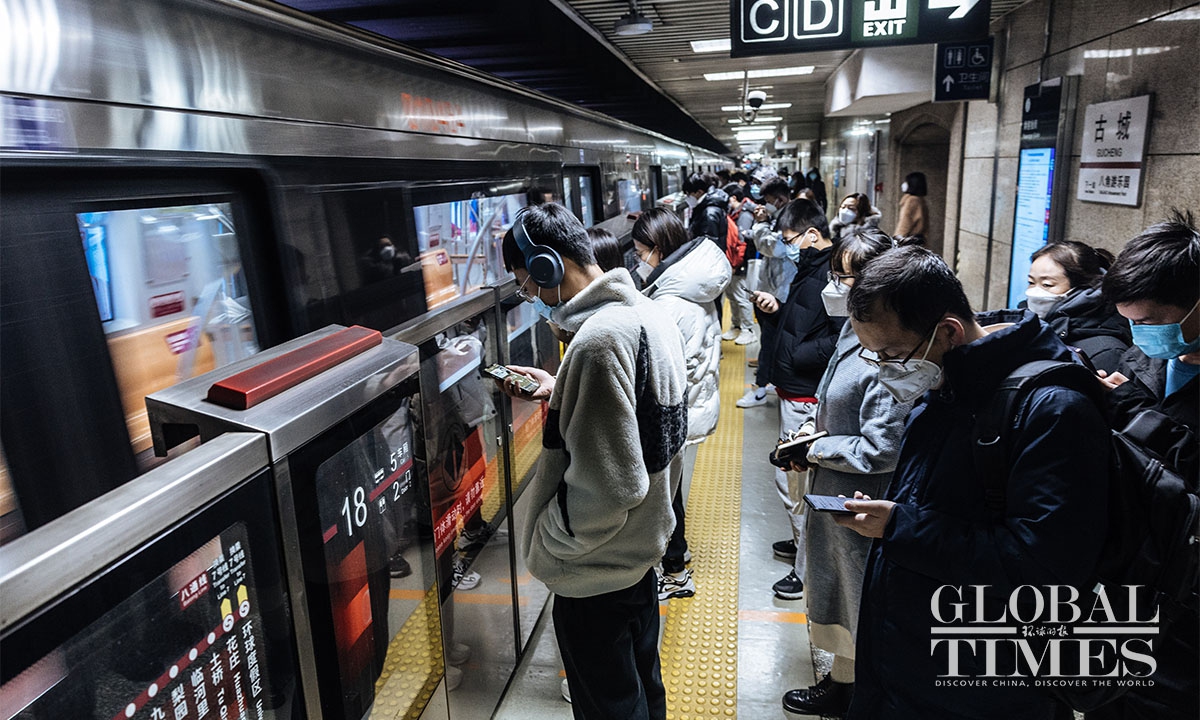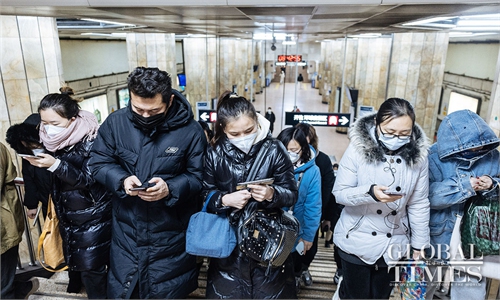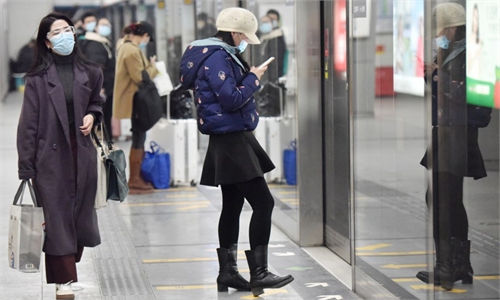
Beijing subway Photo: Li Hao/GT
Beijing's subway capacity was back to normal levels with commuters crowding the subway trains on Monday, as the capital city continues to emerge from a tough period of widespread COVID-19 infections.Experts predicted that passenger flows, logistics and consumption will pick up during the Spring Festival, which falls on January 22, 2023.
Subway trains in Beijing restored normal capacity in the travel rush this morning, to promote work resumption and meet the travel demand of passengers, Beijing Subway said on its official Weibo account on Monday.
The minimum interval between lines 1, 6 and 10 has been restored to 1 minute and 45 seconds, while the minimum interval between lines 2, 5, 8, 9 and the Fangshan line has been restored to 2 minutes. Other lines have returned to normal levels, the city's subway operator said.
The restored capacity came after passenger flows climbed quickly in the past few days, to more than double the number a week ago.
Lines operated by Beijing Subway carried more than 1.85 million passengers on Sunday, compared with 893,500 the previous Sunday.
On Friday, Beijing subway carried more than 3.25 million passengers, up from 1.26 million a week earlier.
Subways in Beijing were packed, while some major roads were jammed with slow-moving cars on Monday.
"When I got to work in the morning, the subway I took was filled to 85 percent of normal capacity," a commuter surnamed Liu told the Global Times on Monday.
A woman surnamed Lü who took a taxi to work said that it took her longer to commute compared with the days when anti-COVID-19 restrictions were in place.
"It took me about 40 minutes to travel from home to work. It took 30 minutes before China's 20 optimized measures and when our office kept the attendance rate at under 50 percent," Lü told the Global Times on Monday, adding that before this round of the epidemic hit Beijing, it took her about 60 minutes.
Subway passenger flow in Southwest China's Chongqing also showed signs of rebounding after reaching the lowest levels in mid-December.
Cities across China have been racing to resume work and production and make the utmost efforts to promote the resumption of normal production and life.
Data showed that daily traffic in many places has quickly returned to or neared pre-pandemic levels, after the COVID wave peaked earlier than expected, Tian Yun, a Beijing-based economist, told the Global Times on Monday.
If the passenger traffic in major cities can recover to pre-pandemic levels, then it basically reflects that domestic demand, particularly in the services sector, has basically recovered to pre-pandemic levels, Tian said.
"If this process will be achieved by the end of this year, the economic situation in the first quarter of next year may be better than we expected," Tian said, expecting a rising passenger flow, logistics and consumption during the Spring Festival.


